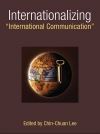
In Producing Bollywood, Tejaswini Ganti tracks the ongoing transformations that have and continue to shape the Hindi film industry into what is now globally known as Bollywood. Following the intensified neoliberal restructuring of India after 1991, Ganti describes the economic and social shifts to the Indian media landscape, as well as the ensuing changes in both national and international perceptions, that have given the contested concept of “Bollywood” its global purchase. She identifies this ongoing process as the “gentrification” of Hindi cinema, noting how a focus on middle-class acceptance—with its invocation of progress, quality, and innovation—has pervaded the contemporary Hindi film industry and has become evident in at least three ways: the subject matter of the films; the discourse of respectability connected to the filmmakers’ and audiences’ class and educational backgrounds; and the attempts at rationalizing and corporatizing the film industry.
The primary focus of Ganti’s extensive research is on these latter two aspects. Her arguments emerge from ethnographic fieldwork carried out intermittently during the late 1990s and early 2000s, namely her own participant observations at numerous film shoots and development meetings and dozens of formal interviews with above-the-line workers. Ganti stresses the importance of such a methodology given the highly personalized and oral nature of negotiations in the Hindi film industry, and the often closed-off nature of its social circles. Similarly, she emphasizes how gender, skin color, and especially class privileges shape the organization of film shoots on set. In a characteristically poignant anecdote, Ganti contrasts her experience as a researcher to a one-off stint as a directorial assistant, highlighting how the latter role’s distinctly lesser stature was immediately evidenced in the loss of certain privileges onset—for instance, whether she was afforded shade from the sun or a chair to sit on.
Ganti’s primary focus is the individuals working within the Hindi film industry and the ways in which they negotiate their roles and espouse certain values, but this focus is complemented with a sharp attention to everyday objects and their significance. In this excerpt, Ganti refers to the connotations of the “bound script,” a finished script before shooting starts. Creatives in the Hindi film industry invoke the bound script as a symbol of formalized film production, and use it to differentiate themselves from the purported lack of professionalism and organization of Bollywood. As Ganti explains, the bound script is associated with an idealized concept of Hollywood, where film production is considered highly professional and perfectly rationalized. Film producers and directors align themselves with this ideal and distance their work from the informal practices of others in the Hindi film industry. Ultimately, Ganti notes how the very practices of informality that these professionals want to disavow—the orality of scripting and negotiating, the absence of clear-cut divisions of labor, or the minimal and prudent use of resources—also stand, paradoxically, as markers of the industry’s ingenuity, and what has helped it achieve world-wide renown.






